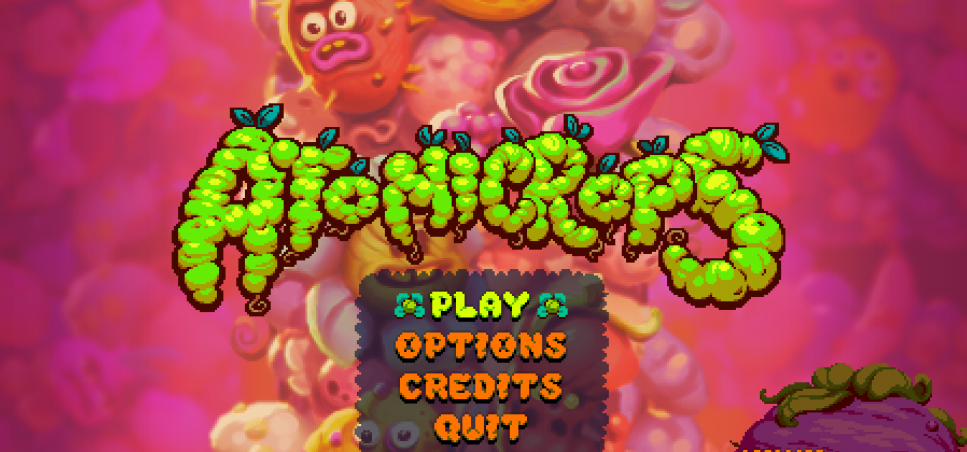Farm. Marry. Kill. But not in that order!
Type: Single-player
Genre: Action, Rogue-Lite, Simulation
Developer: Bird Bath Games
Publisher: Raw Fury
Release date: 29 May, 2020


Introduction
Atomicrops bills itself as “an action roguelite farming simulator”. It’s currently available only on Epic Game Store, but is due out on Steam and console later this year. It’s been in Early Access for a while now, with the 1.0 release back at the end of May, but it’s still not quite finished.
The game begins with a short, but hilarious, video showing you — a city boy — inheriting your uncle’s farm and meeting one of the neighbours. This is followed by the tutorial, where said neighbour shows you the very basic farming and crop-defence controls in a couple of minutes, which is followed by nuclear destruction of your farm. You’re then left on your own to learn everything else.
Farm
The basic aim of the game is to farm crops and make as much money as possible. The game’s core currency is cashews, which you earn from growing crops during the day, defending them from invading mutated herbivores during the night, and selling them in the post-apocalyptic village the following dawn. The day is short, though, starting out with only a minute or two of play time before night falls and you’re inundated by pests. Some days seem to have gone on for longer (even without Daylight Savings), so perhaps there’s a bit more going on here, too.
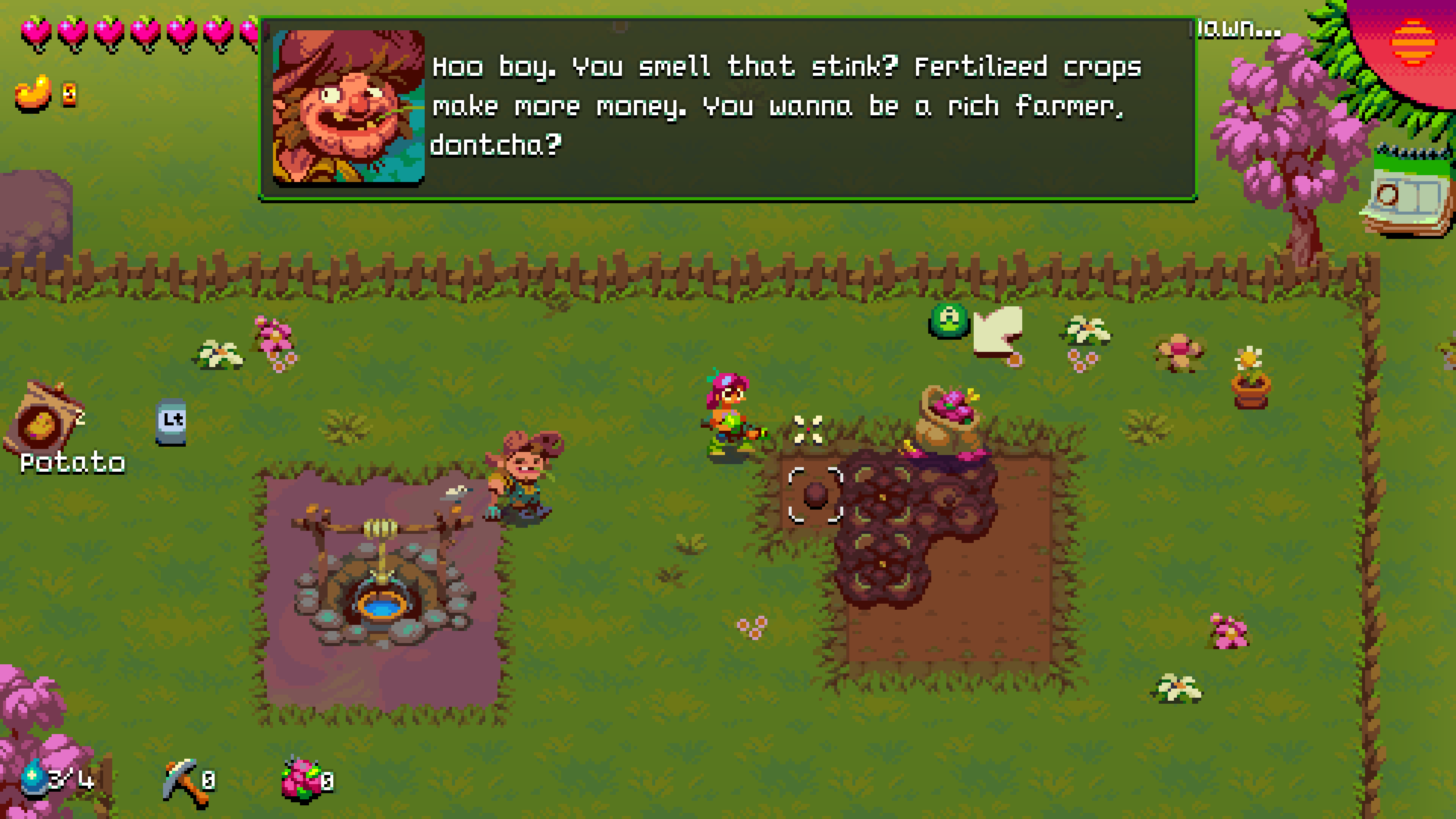
The core gameplay loop is further expanded with a three-day cycle: at the end of the third day you’ll encounter a boss creature. Survive that battle and the village celebrates the end of the season, with the mayor rewarding you for your efforts depending on your performance, before the new season starts. I’m not sure if there are actually any seasonal effects on farming; I haven’t seen any obvious ones yet.
Your farm starts out small — only three-by-three squares — and you begin the game with one pack of four potato seeds. Do well on the first day, though, and your first visit to the farm should have you with 48 or more cashews to spend, which is easily enough to buy another pack of seeds, if the store has any in stock.
Farming is almost all done by holding down one button on either controller or mouse: use a pickaxe to expand your farm plot, then remove weeds, dig up the soil to till it, and plant the seeds. You then drop fertiliser with a different button, water the plants by filling up your water supply and touching the plants, and harvest them with a third button. The controls take a little getting used to and it can be hard sometimes to work out which plant you’re watering or fertilising, or whether you’re cutting a weed, tilling soil, or planting a seed where you don’t really want to. It’s a shame there’s not a different button for the planting action, at least.
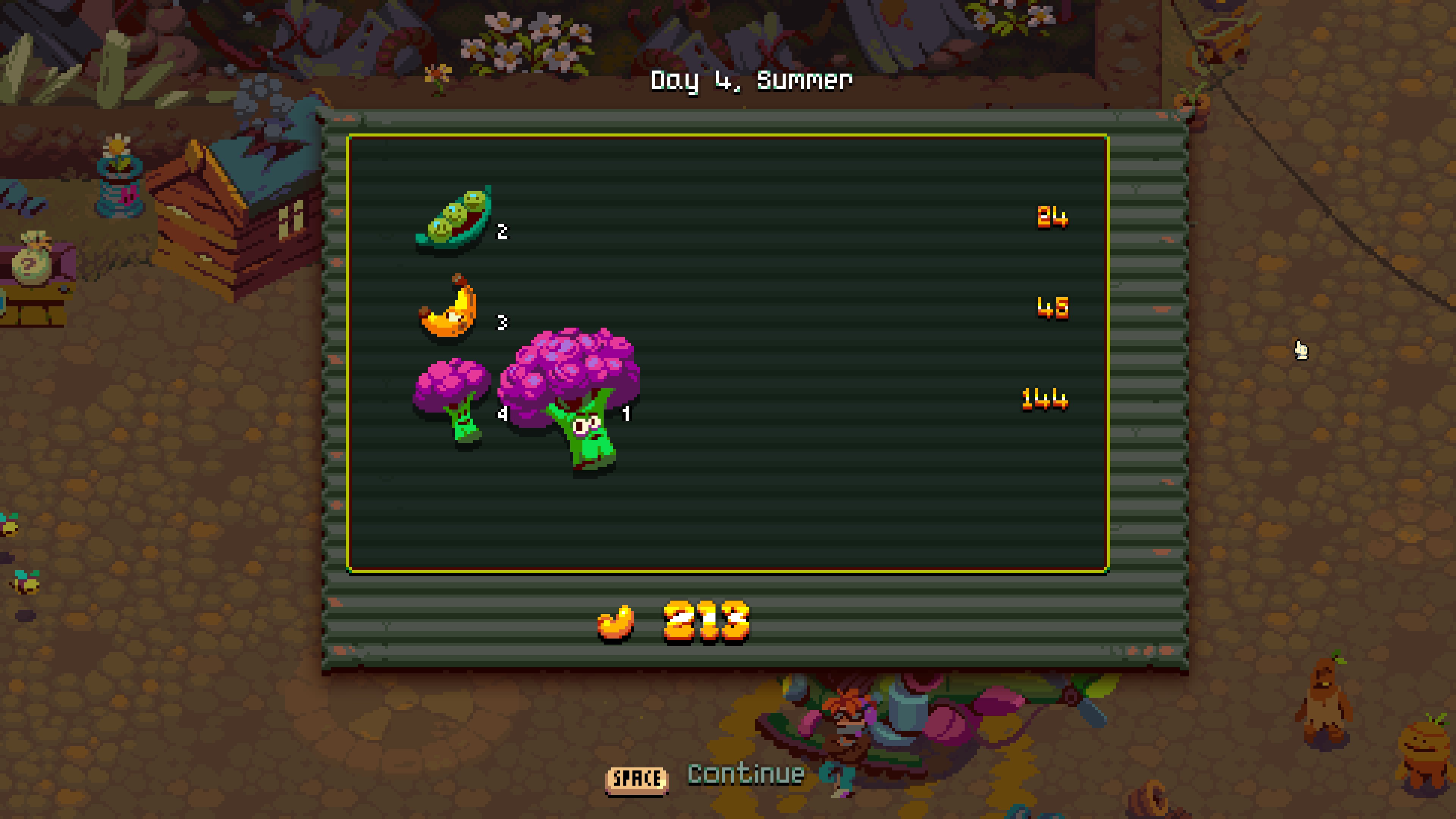
There’s also a merging game mechanic, where if you plant identical seeds in 2×2 patterns and fertilise them enough, they merge into one larger plant, making placement and care of your plants important. These larger plants are worth considerably more than the sum of their parts. This also apparently happens with trees, though I’ve yet to have four trees available to try it out. Seeds are divided into tiers, which affect final value, and biomes, which affect water and time requirements for growth. They can be hard to come by, though, so it’s often a hard decision as to whether you want to plant them for immediate gain or wait until you have four of a kind to maximise your profits. Fertiliser is scarce in the early game, though after some nightly defence or exploration it’s usually much more abundant. It’s mainly earned from killing creatures, but sometimes you’ll find it in weeds or other rubbish littering your farm.
You can also discover or purchase friendly creatures to help with farm maintenance, including chickens, cows, and pigs. And reusable tractors are like special abilities with cooldown timers, allowing you to dig up vast swathes of weeds, turn enemies into fertiliser, or water large areas at a time. You can normally only have one tractor, though, so choose carefully.
Farming mostly works very well, apart from a few control issues. The merging mechanic is a good addition and you really need to consider crop placement and requirements in order to maximise return. The three-day cycle adds extra difficulty and variation, which is both good and bad.
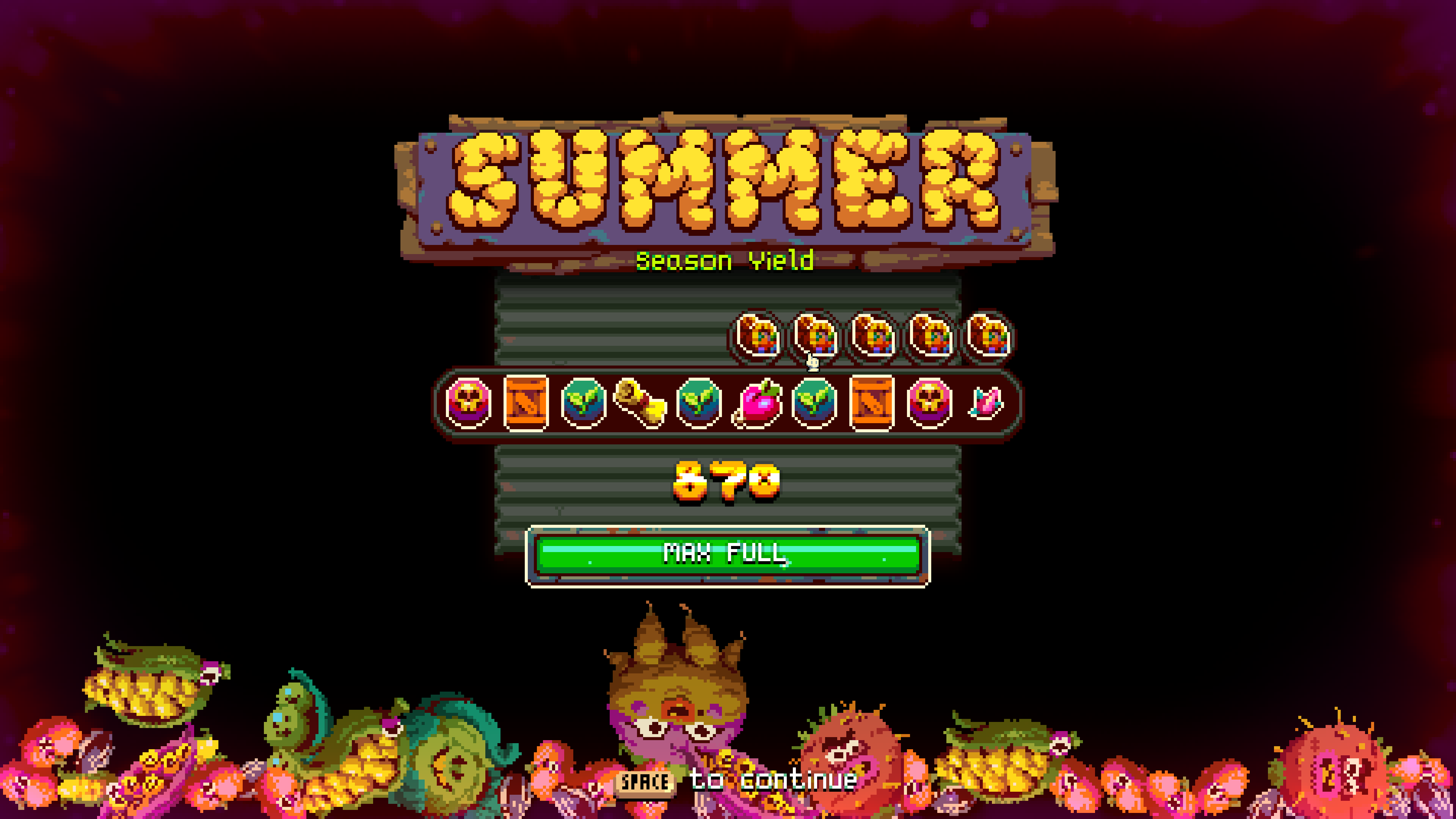
Marry
Atomicrops has a secondary currency: roses. These are even harder to find than normal seeds, but if you can get them then they’re definitely worth focusing on. A second vendor in the village sells health in exchange for roses — the only way to recover health unless you’re lucky enough to find health drops during the day time. Two strangers inhabit the village each season, too. They can be wooed with roses, with each level of flirtation providing a new passive bonus from the many passive items that can be found in the game, Binding of Isaac style. Woo them enough and they’ll marry you, providing more active help around the farm during the day time.
There are also two special festival vendors who are only available during the end-of-season celebrations after you complete each three-day cycle. One of these sells tractors for cashews, but the other sells three random items each season for roses, with his stock variety including passive items and farm animals, such as pigs or chickens.
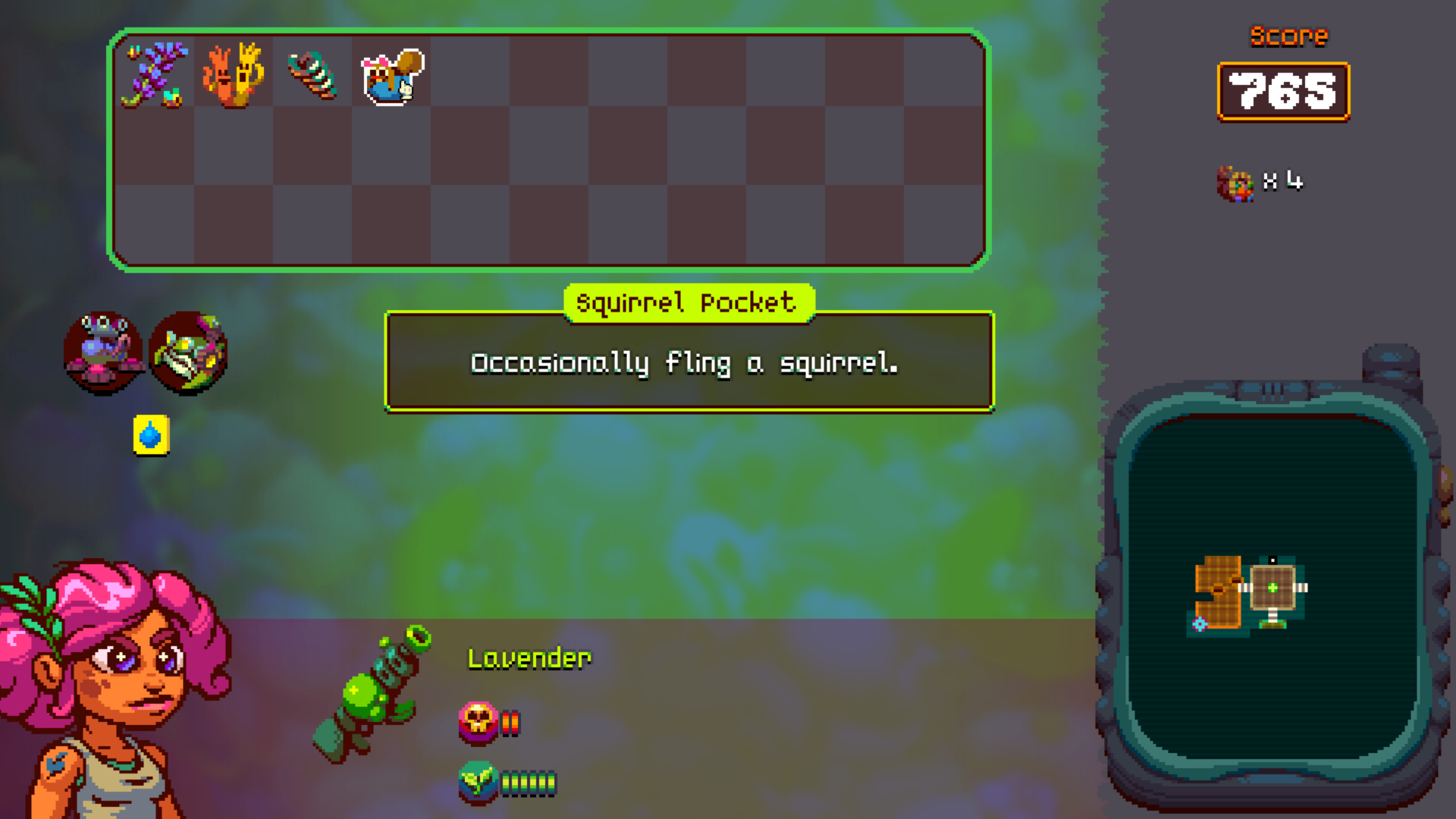
Given how much of the game is locked behind the rose wall, it’s a shame how rare they are. I’ve played some games where I’ve only managed to find one or two rose seeds, barely enough to restore a couple of pips of health, let alone buy something from the store or flirt with a stranger. At the very least I’d have preferred the health store to use cashews instead, since health recovery can otherwise be extremely difficult.
The Rogue-like nature of the game makes progress based heavily on RNG results in this regard — miss out on rose and health drops and you won’t last long!
Permadeath is also a feature, with the expectation that you’ll play the game over and over again as you learn it, ideally getting better each time.
At first I thought there was no meta-progression — no way to improve your chances on the next run except by adding to your own knowledge of the game — but after eight hours or so I encountered some friendly ants who were waiting for me at my destroyed farm after my next run ended. I was pleasantly surprised to find that they were happy to take a third currency — cornucopias — in exchange for offering me permanent improvements. Though so far those improvements are fairly limited, it’s still great to get a bit of a boost, as by that time starting out again was becoming a little stale.
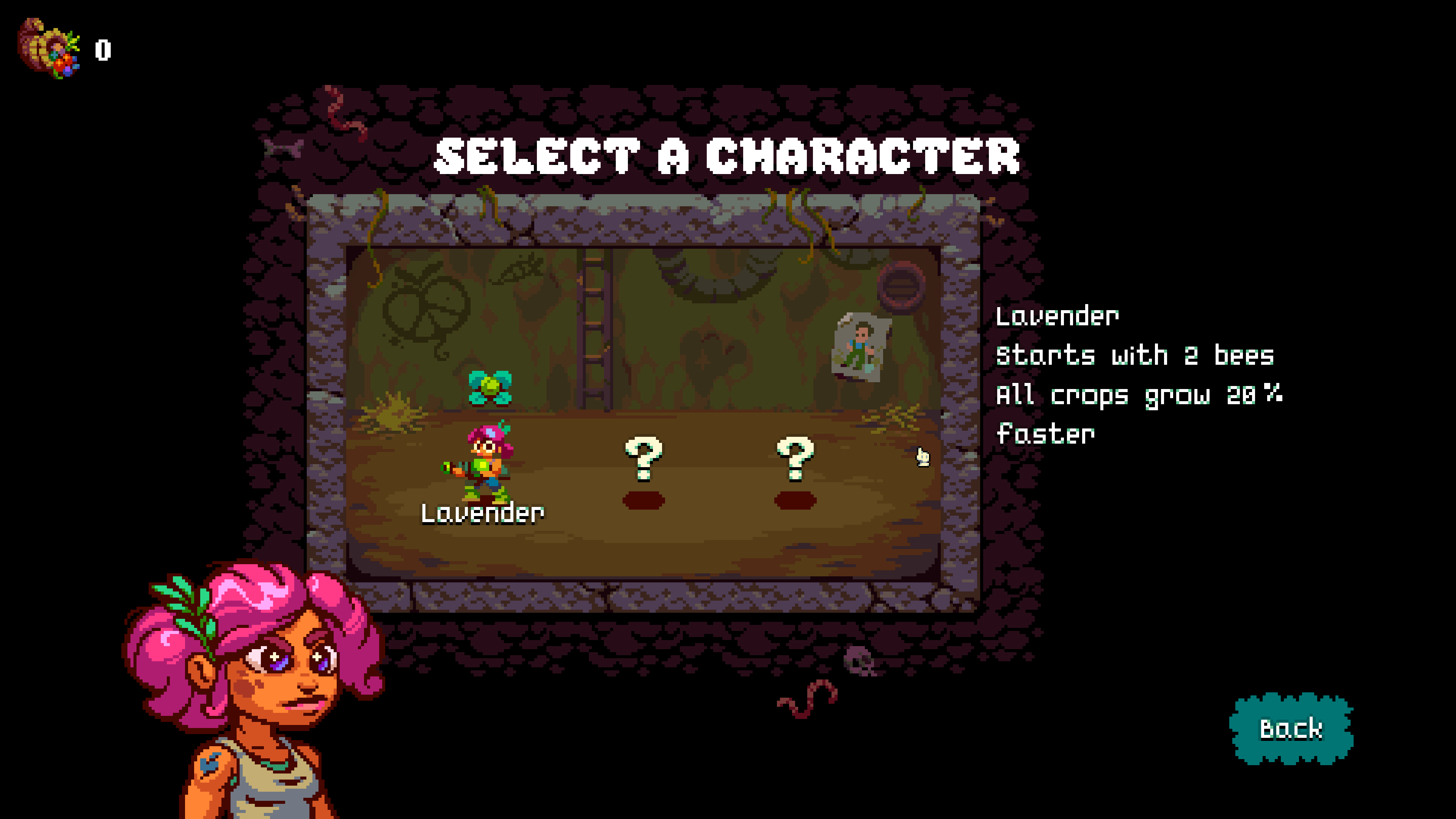
Kill
There are lots of crazy mutated creatures to kill in Atomicrops.
From the gun-toting rabbits — of a number of different types — to flower moles, semi-transparent flying things, giant things in big metal rubbish bins, huge ants, and more. All of these are taken care of in the usual twin-stick shooting way — by running around dodging bullets with your left hand and independently aiming and shooting back with your right. The variance in enemy types and attack patterns is appreciable and let down only by the slightly dodgy collision detection — I swear sometimes I’m not actually in contact with anything when the game takes one of my health points away from me!
Mostly these enemies attack at night, and divide into two groups: those who attack your crops (but still damage you if they touch you), and those that exclusively focus their efforts on killing you. The former tend to be close-range / melee attackers, while many of the latter are happy standing back and peppering you with ranged weapons. After the first day or two you’ll also — annoyingly, in my opinion — see some of them encroaching on your farmland to take pot-shots at you while you work. And they’re also the focus of the third core element to Atomicrops: day-time exploration.
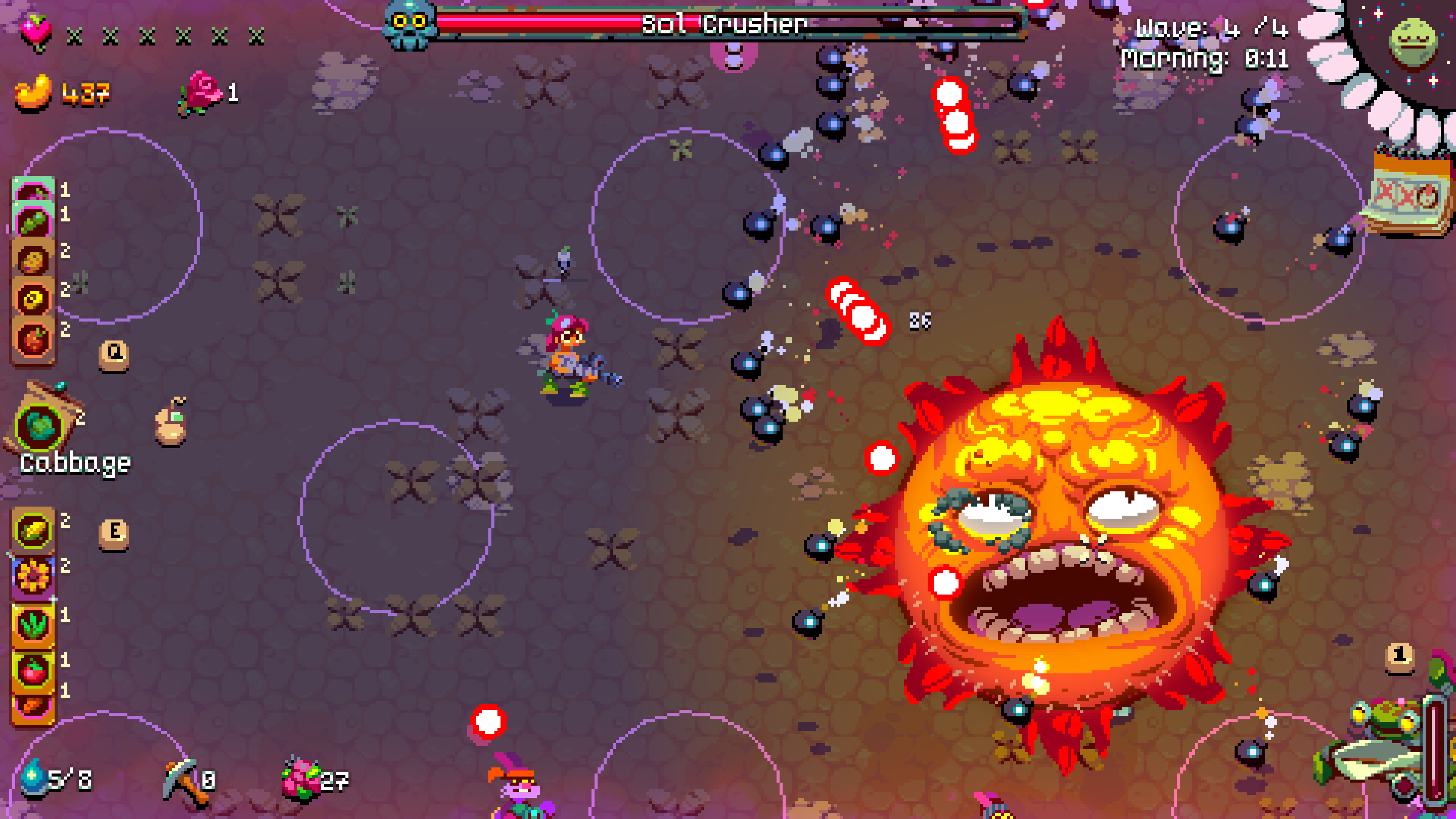
Each day you have to share your limited time between the aforementioned farming and exploring the areas surrounding your farm. In each of the four cardinal directions lies a different hostile area, each of which is in a different biome. Only two of these — desert and plains — are available at the start, with others being unlocked by repairing the bridges that cross the rivers between them and your farmland.
Cross a bridge and you’ll find yourself in a large rectangular area, populated by procedurally generated “camps” of enemies surrounding hostage animals, loot-laden flowers, or other good stuff — or sometimes just wandering about randomly, intent on your demise. In these areas your farming controls are disabled and you’ll be reliant only on your weapon for protection. But there are some great items, seeds, tractors, … . Almost anything that can be bought or found in the village can be dropped in these areas, giving you huge benefits if you’re only able to best the RNG — and can spare the time away from your busy farming schedule to explore before the day finishes!
You can improve your chances on these exploratory ventures by purchasing a better gun with cashews from the arms dealer in the village each dawn, but in a strange design choice the developers have made these weapons only last a single day, so at least early on they’re best saved until one of the boss days, so you can get double use out of them: exploration and boss defence. At other times you’re left with your trusty (and literal!) pea-shooter, which works well enough against early night defence and exploratory creatures, but feels rather weak indeed as you move into the second and subsequent seasons.
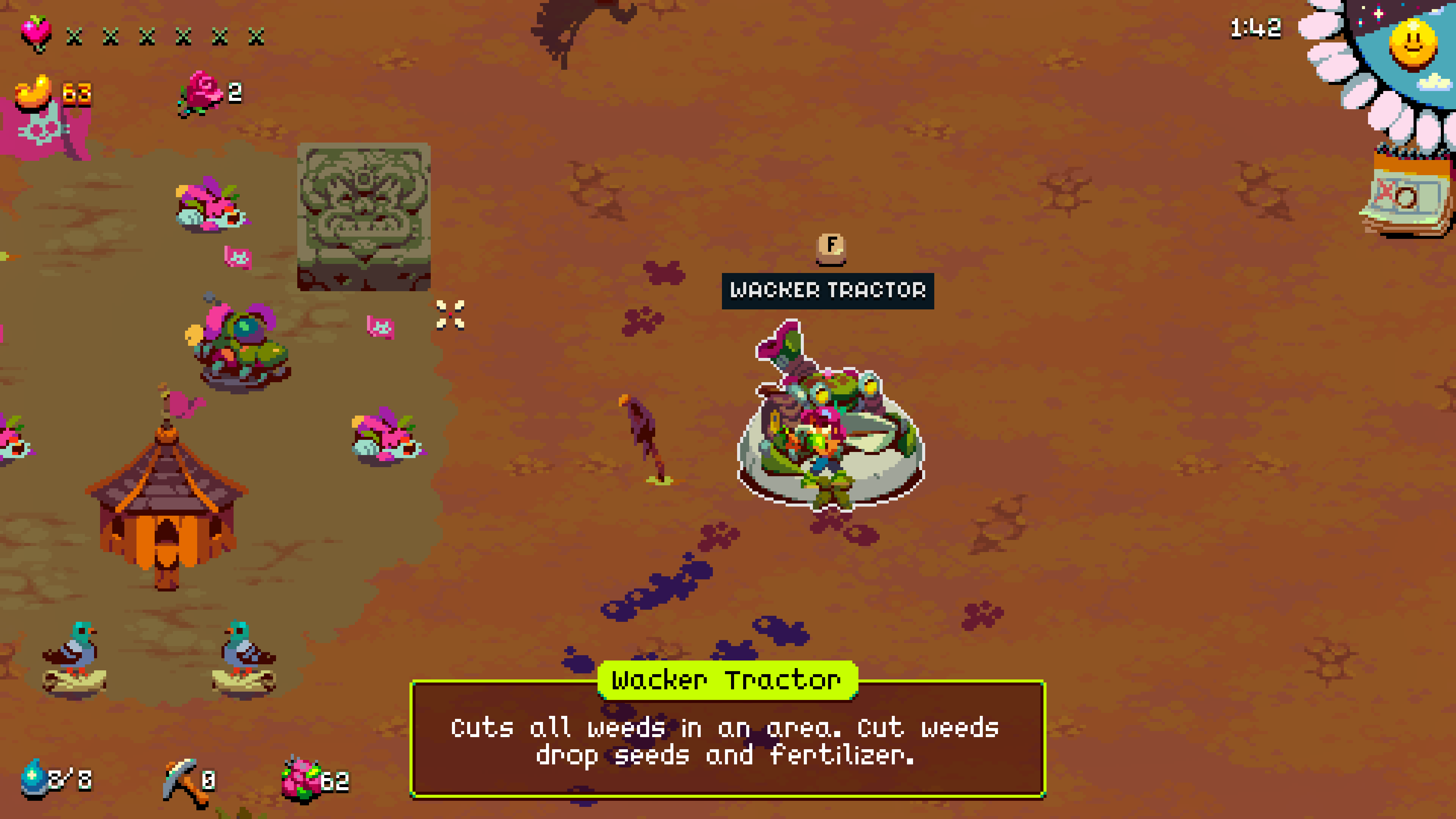
Presentation
After the cartoon-style movie introduction, Atomicrops exclusively uses detailed pixel graphics that are probably the second best I’ve seen anywhere — after Children of Morta. They’re bright, colourful, and very well animated. The creatures, plants, and other inhabitants all ooze personality — as much as chunky-pixel art can — and it really adds to the feel of the game. Lately I’ve found pixel graphics to be a bit overused, and tend to shy away from them a bit, but that’s definitely not the case here; they work exceedingly well.
Sound and music are both excellent, as well. Giggling mutant potatoes let you know when they’re ready to harvest; your pet piggy snorts happily as he rolls around in the mud, improving your soil; and your pea shooter sounds like it’s shooting out squishy peas. Behind all this is a great musical score that is jaunty and happy, though I have no idea how to describe the genre of the music — it fits the game perfectly. Night defence music is sort of spooky, but somehow still conveys a feeling of silliness. If I had to describe it I’d say it reminds me of Tom Waits’s Rain Dogs mixed into a sort of Bluegrass feel. It’s weird, but very cool.
The user interface is simple and mostly easy to understand once you realise that you can open an inventory / status screen (TAB on the keyboard), which includes brief, but useful, tooltips for everything. It takes a little getting used to, but all of the information you need is easily accessible in a way that fits the game’s graphics well. Graphics options are minimal, but it runs without a hitch on my i5 / RX5700 system in Ultra HD.
There’s currently no option to customise your controls — the UI option displays a rudimentary “Under Construction” dialog box — but button / key assignments are clearly shown on the pause menu.
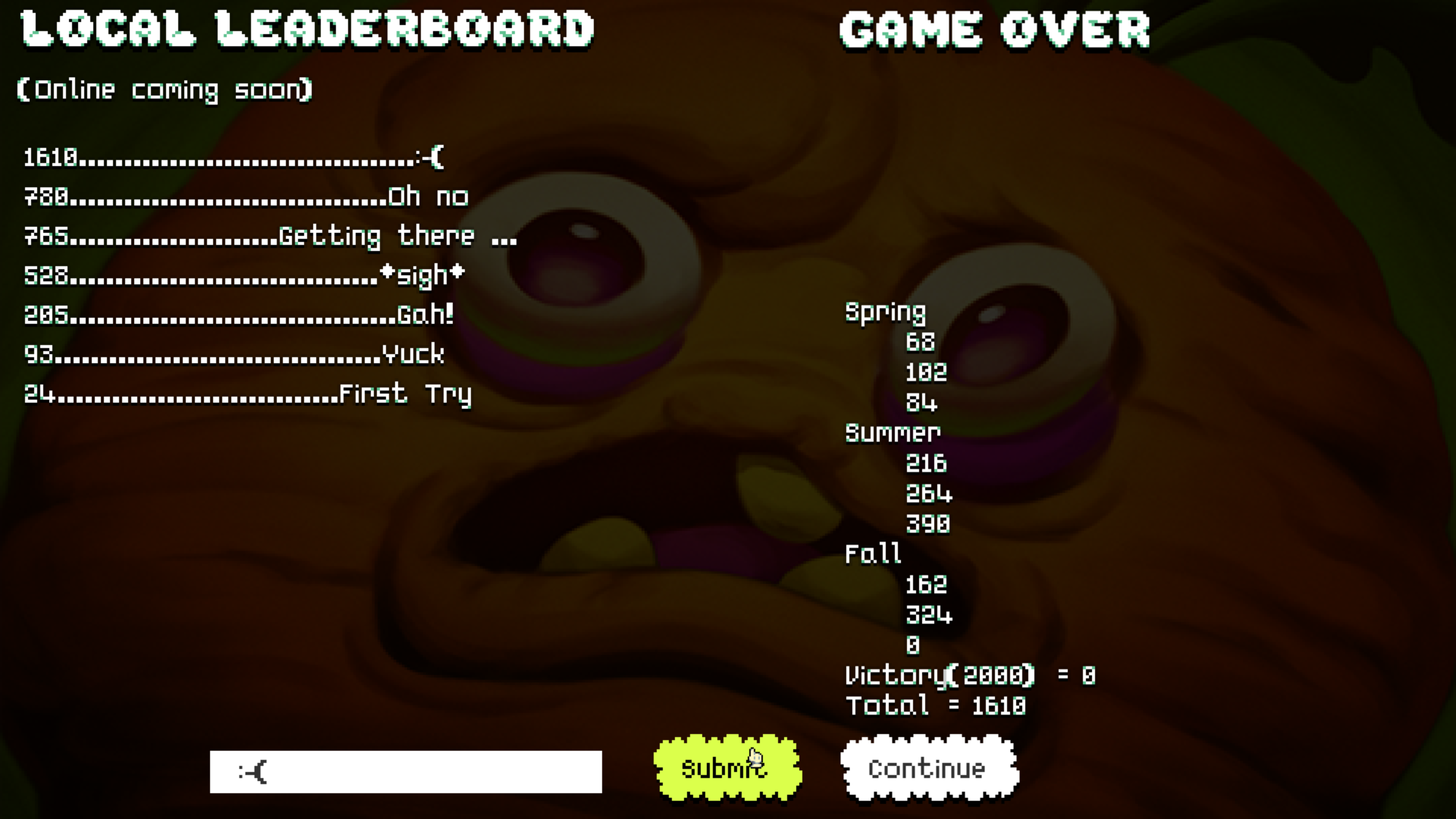
Verdict
I’ve seesawed a bit on my view of Atomicrops. As soon as I started playing it I knew I’d recommend it, but narrowing down the rating has been difficult.
It’s frustrating as anything at times, while being hugely addictive and intensely rewarding at others. I know that’s often the nature of Rogue-like games, but it’s more than that here, with very minor control issues and some design decisions — especially the single-day weapons, very limited health, and time-critical day-time gameplay — compounding the effects of RNG still further. I’m also not quite convinced on the collision detection; combat seems harder than it should be, but maybe I’m just bad at it!
The strong and weird sense of humour, huge range of items, wonderful graphics and sound, and slowly revealed gameplay elements add considerably to the game’s appeal, and after finally discovering the meta-progression ants, I’m currently well down on the Save side of the see-saw, and can see myself spending many more hours on it in the future.
For anyone who likes humour and twin-stick shooters, I can see no good reason to not pick up Atomicrops today. Just be ready for a bit of a learning curve at the start.

